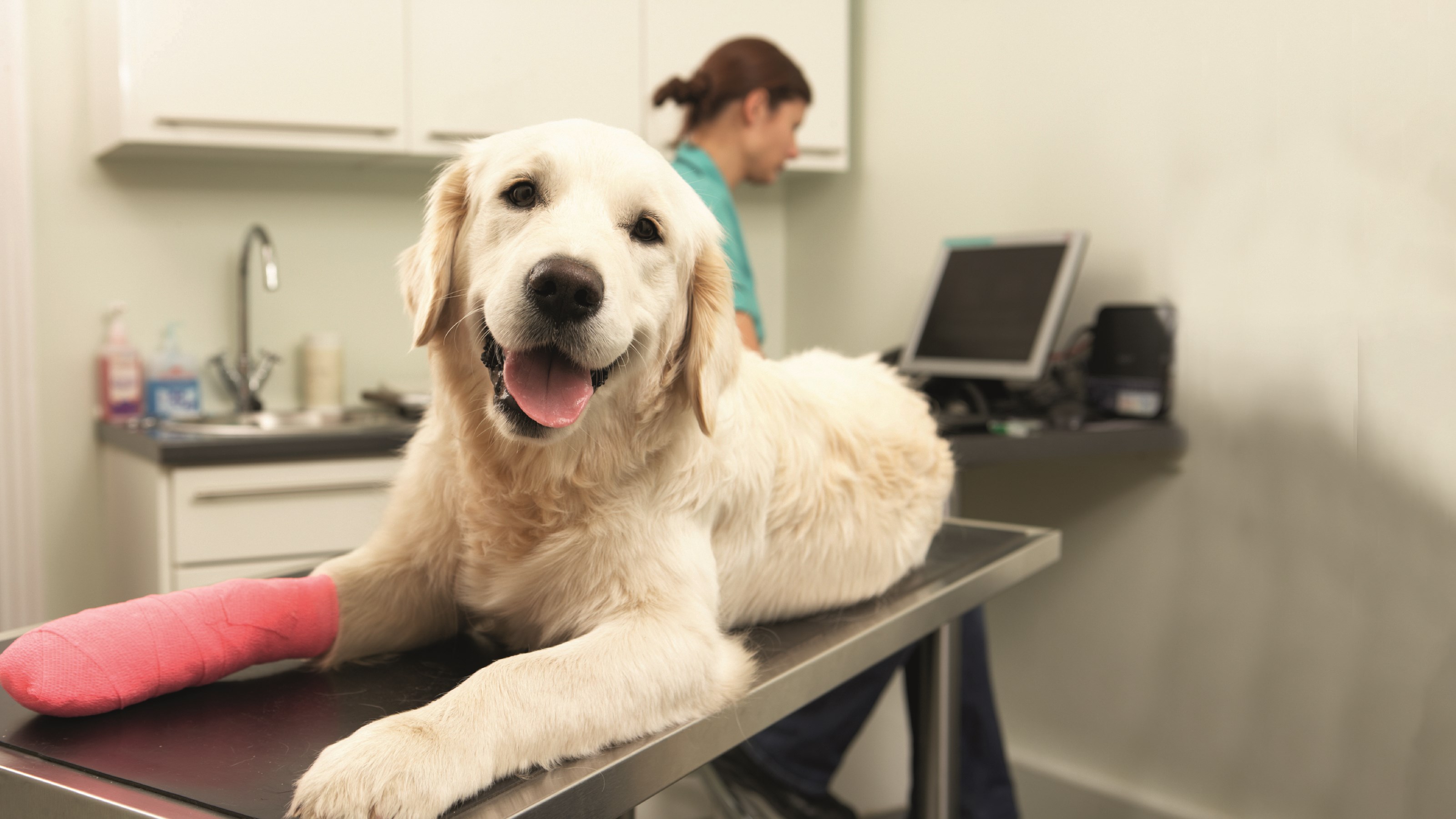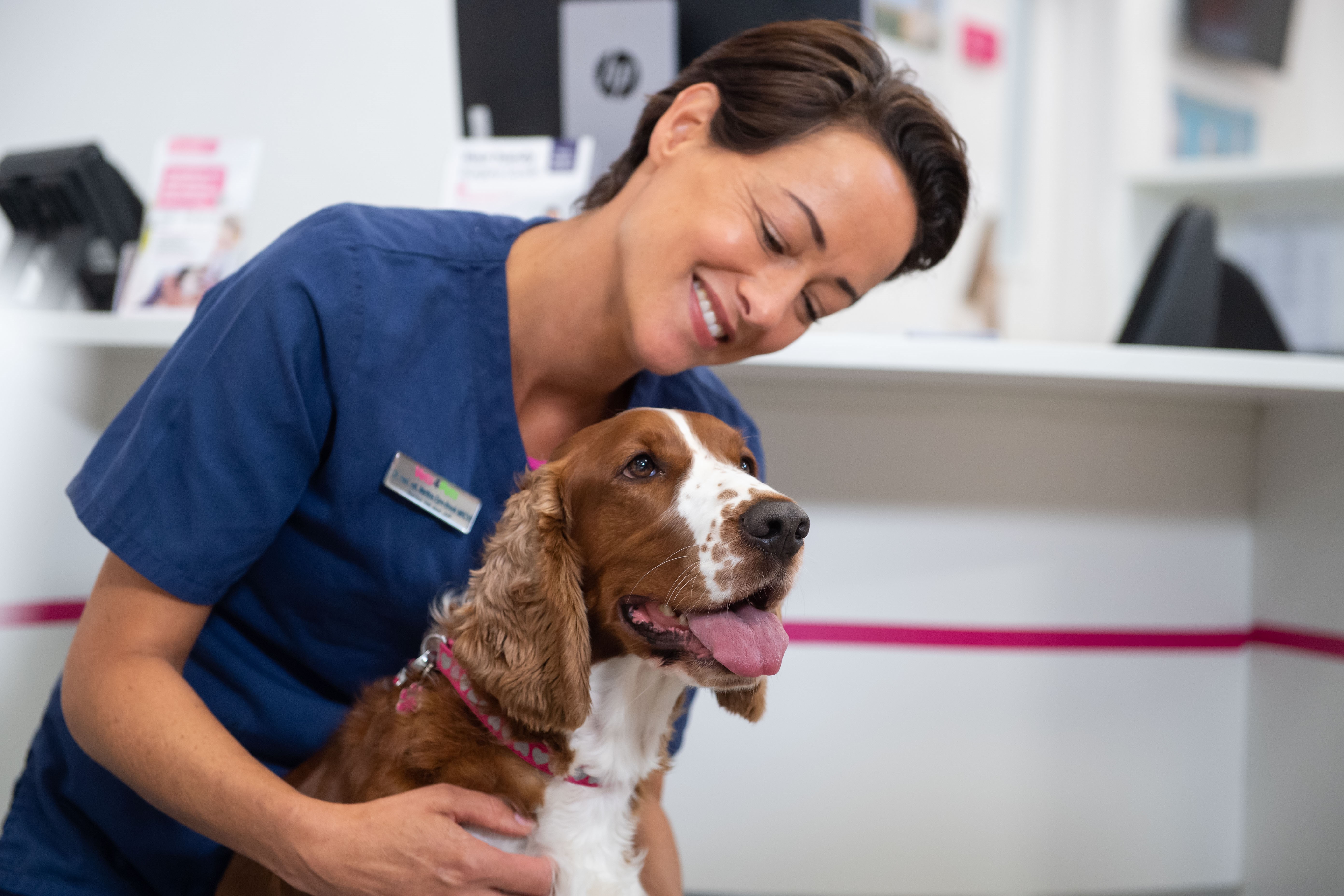
General anaesthesia for pets
General anaesthesia may be given to cats, dogs and other small pets who need a procedure where they need to remain still.
When your pet has a general anaesthetic, medicines called anaesthetic agents are given to them to send them into a controlled unconsciousness and keep them like that until it's time to wake them up again.
It can feel daunting to hear that your pet needs a general anaesthetic, so let's look at how to prepare your pet for what happens on the day, and what you might expect afterwards.
Preparing your pet for general anaesthesia
Your vet team will give you some instructions on the preparation of your pet for anaesthesia. Cats should be kept indoors with a litter tray, from at least the evening before their procedure, to control what they eat and to avoid them 'going missing' when they see their cat carrier. Dogs should be taken out to the toilet before leaving for the clinic.
To reduce the risk of regurgitation, your vet will ask you to remove access to food for a short period before the procedure, appropriate to your pet’s size and age.
Unlike dogs and cats, rabbits and small pets need to eat until their pre-med and should bring a packed lunch with them, containing their usual and favourite foods. Your vet will let you know whether your rabbit's companion can accompany them for the day. Separating bonded rabbits is stressful for them.
Informed consent
When your pet is admitted for a procedure, you'll be asked to sign a form that says you give informed consent. This means that your vet has explained the planned procedure, together with the possible risks. You'll have discussed the chances of complication and the possibility that, once the procedure is underway, new information may emerge that necessitates a change of plan.
It's important that you confirm your contact details for the day so that you'll be available if your vet team need to reach you mid-procedure. The vet can't continue with an off-plan procedure if it hasn't already been discussed unless it is, in their clinical judgement, in your pet's best interests.
What happens when my pet has a general anaesthetic?
If your pet needs a general anaesthetic, they'll have a pre-operative check on the morning of their procedure or a few days before, to assess their health and risk level. Your vet will examine them and listen to their heart and lungs. Depending on the likely risk level, your vet may recommend pre-operative screening, such as a blood test.
The vet or nurse admitting your pet on the day of their anaesthetic will take you through the consent form to confirm your contact number for the day and to discuss possible risks associated with the procedure. Your pet will then be weighed and settled in their bed in the ward.
Your pet may be given a pre-med, which is an injection containing medicines that help them to relax and that may reduce the number of anaesthetic drugs needed. Depending on their procedure, they may also receive some pre-emptive pain relief.
Once your pet is relaxed, they might have an intravenous catheter placed in a vein. In dogs and cats, this is usually in a front leg. In rabbits, the catheter is normally placed in an ear vein. A drip line can be connected to the catheter and, when it's time for your pet's procedure, they may receive their anaesthetic induction agent through it too. Alternatively, some induction agents are given into a muscle.
As soon as your pet is asleep, an airway device such as an endotracheal tube or laryngeal mask will be placed. This protects the airway from any material from the digestive tract. It connects the pet to the anaesthetic machine, which delivers fresh oxygen and anaesthetic gas and removes carbon dioxide as the pet breathes out. If necessary, the anaesthetic machine can be used to breathe for the pet. Monitoring equipment is then attached to the pet to enable them to be evaluated throughout the procedure. There are no airway devices small enough for some pets. Instead, they will have a soft mask placed over their nose that connects to the anaesthetic machine.
A team of vets and nurses work together to manage a general anaesthetic. Normally, a veterinary nurse stays at your pet's side and records frequent measurements and observations. The nurse reports their findings to the vet, who directs them to make appropriate adjustments. The aim is to maintain your pet at the right level of anaesthesia to enable their procedure to be performed, while keeping their functions such as heart and respiratory rate, and blood pressure, within safe limits.
Once it's time for your pet to wake up, the anaesthetic gas will be switched off and they'll continue to receive oxygen as they come around. Monitoring will continue and once they are ready, your pet's airway device will be removed. Their nurse will take them back to recover in their bed and will stay with them to ensure they wake up smoothly and to provide reassurance. Some pets wake up very calmly, while others are disorientated and may need to be given a light sedative to ease them gently back to full wakefulness.
You'll either have been asked to call the clinic at a given time, or the team will call you to let you know how your pet's procedure has gone and to arrange a going-home appointment. During this appointment, the vet or nurse will advise you on what to expect overnight, how to take care of your pet over the following days, and which number to ring if you're concerned.
What to expect following your pet’s general anaesthetic
Every pet is different and, while some might act as though they’ve had a normal day, others are subdued, or even excitable. The procedure they’ve undergone will also influence their recovery.
The most common after-effects of anaesthesia in dogs and cats include an upset tummy, clinginess and sometimes restlessness. Occasionally, you may see signs your pet has a sore throat or a slight cough. This could be due to irritation from the airway device used and is normally temporary. It's been reported that during the first 72 hours post-anaesthesia, 38% of rabbits have gastrointestinal issues, suppressed appetite and defecation. These are always treated as an urgent matter.
If you’re worried about your pet after their anaesthetic, or if something happens you weren’t expecting, contact your vet team straight away. If this is out of regular clinic hours, you’ll be able to talk to a vet at the clinic’s out-of-hours provider, so make sure you have their contact details to hand and know how to get there, should your pet need checking.
FAQ's
If your pet needs a procedure that would cause pain or discomfort, frighten them, or require them to be absolutely still, your vet will recommend that they have a general anaesthetic.
Sedation is carried out when we want a pet to feel calm and relaxed, while remaining conscious. Different levels of sedation are achieved by using calculated doses of sedative drugs. For instance, we might want to sedate a pet lightly if they’re worried about having a blood sample taken or a wound cleaned or bandaged. If a dog has a grass seed in their ear, however, we may need to sedate them more heavily so they can relax while we insert an otoscope and forceps into their sore ear canal. We often perform diagnostic imaging, such as X-rays, under sedation. However, sometimes, being positioned for X-rays can still be uncomfortable. If we’re positioning arthritic joints, for example, we may opt for general anaesthesia to make the experience better for the pet.
When we sedate pets, they remain conscious and in control of their involuntary reflexes, including protection of their own airway. This means that, should regurgitation or vomiting occur, they should still be able to avoid inhalation of the material, like they would when awake. If a pet is at higher risk of vomiting or regurgitation, we may choose general anaesthesia over sedation so that we can insert an endotracheal tube or a pharyngeal mask and protect the pet’s airway for them.
Although advances in companion animal anaesthesia mean that general anaesthetics are relatively safe, there is still some risk.
The most common complications reported during or following anaesthesia include low blood pressure, cardiac arrhythmias, regurgitation and aspiration pneumonia from inhaling stomach contents. The risk of anaesthetic death in cats has been reported as 0.24% overall or 0.11% in previously healthy cats. For dogs, the risk is 0.17% overall or 0.05% in healthy dogs. These are slightly higher than the reported risk in humans. Rabbits are at greater risk of death during or within 72 hours following sedation or anaesthesia, with one study finding the incidence to be 4.8%. However, it's important to note that complications under general anaesthesia are rare.
Some pets may be at increased risk on account of their size, age or breed. Individual factors are always considered when planning and managing anaesthesia for each pet. For older pets or those with existing health problems, your vet may recommend pre-operative tests such as blood or urine screening to assess how well their bodies might handle anaesthesia.
Risk reduction begins with pre-operative assessments and preparation. If your pet has had an unusual reaction to a medicine or to anaesthesia before, tell your vet. Also, let them know if you think your pet may have had access to food during the pre-operative fasting time. This might necessitate rescheduling your pet's procedure, but it could just mean the practice team rearranging their anaesthetics list for the day, to be on the safe side.
The anaesthetic agents and any premedication will be chosen and their dosage calculated based on your pet's age, weight, health, known history and the procedure being performed. Your vet may also recommend that your pet has the support of intravenous fluids.
While your pet is asleep, your vet team will monitor them closely. Some monitoring methods include pulse oximetry, showing how much oxygen your pet's blood is carrying, and measurement of heart and respiratory rates and rhythm, temperature and blood pressure. Some clinics also use capnography, providing information about the patient's circulation and respiration, and ECG, showing the heart's electrical activity.
Vet teams are trained on how to respond if a pet develops a problem during anaesthesia and they're constantly responding to the information provided by the monitoring equipment.
When your pet's anaesthesia is finished, they will continue to be supervised and monitored closely until they're up and about, to make sure everything is well.
Health Plans to keep your pet healthy
At Vets4Pets we offer a range of Health Plans that make essential routine treatments more affordable. You'll save money on things like annual vaccinations, flea and worm treatment and routine health check-ups.

Read more expert pet advice
From healthy diets to preventing fleas, find free and helpful pet health and training advice to care for your pet.
